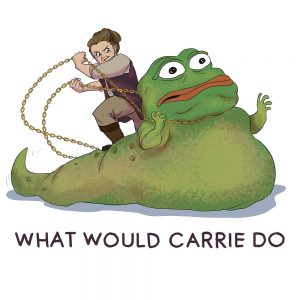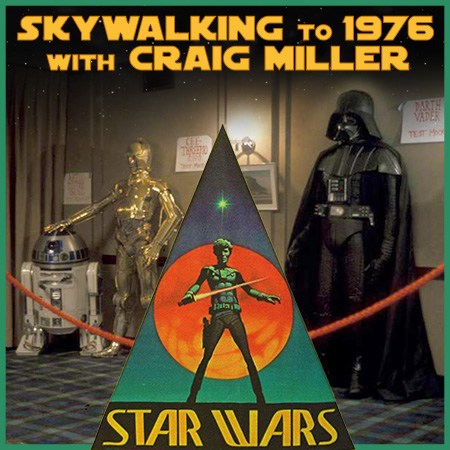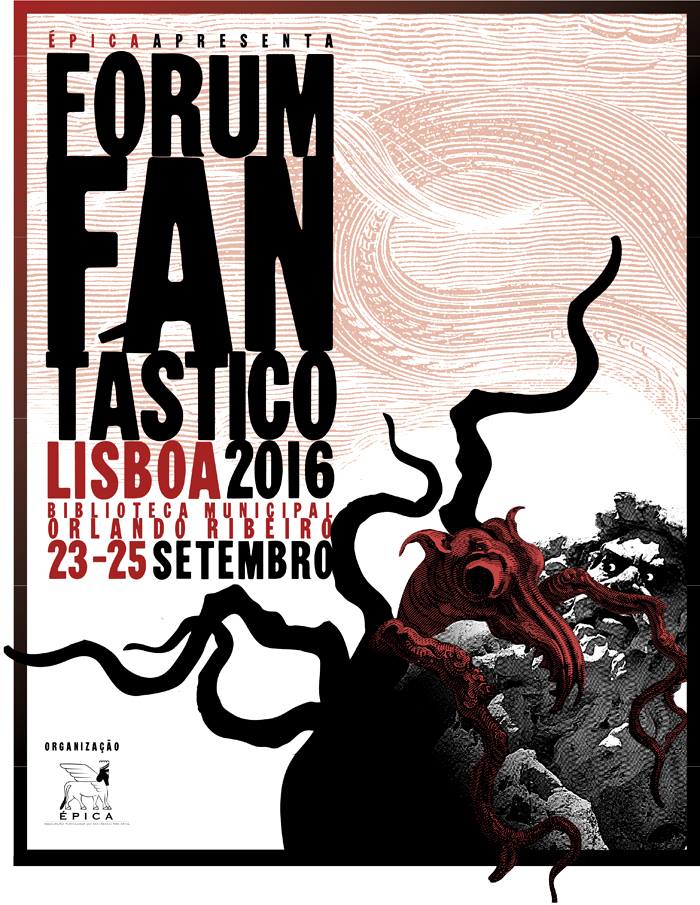(1) RECURSIVE NEWS. The Large Hadron Collider gets a pixel tracker.
Officials said the replacement of a key component inside the CMS experiment represented the first major upgrade to the LHC – the world’s biggest machine.
Engineers have been carefully installing the new “pixel tracker” in CMS in a complex and delicate procedure on Thursday 100m underground….
More than 1,200 “dipole” magnets steer the beam around a 27km-long circular tunnel under the French-Swiss border. At certain points around the ring, the beams cross, allowing collisions to take place. Large experiments like CMS and Atlas then record the outcomes of these encounters, generating more than 10 million gigabytes of data every year.
The CMS (Compact Muon Solenoid) pixel tracker is designed to disentangle and reconstruct the paths of particles emerging from the collision wreckage.
“It’s like substituting a 66 megapixel camera with a 124 megapixel camera,” Austin Ball, technical co-ordinator for the CMS experiment, told BBC News.
In simple terms, the pixel detector takes images of particles which are superimposed on top of one another, and then need to be separated.
(2) COLLECTING THE CURE. A bidder paid top dollar for a moldy piece of history.
The mold in question — which actually outpaced early expectations to be sold for a whopping $14,617, according to The Associated Press — is a capsule of the original Penicillium chrysogenum Alexander Fleming was working with when he discovered the antibiotic penicillin. Encased in a glass disc, inscribed with the words “the mould that first made Penicillin,” and signed by Fleming himself, the little sample comes from the collection of Fleming’s niece, Mary Anne Johnston.
(3) GOLD RUSS. James Davis Nicoll has the panelists reading “When It Changed” by Joanna Russ at Young People Read Old SFF.
With this story we enter the 1970s, the last decade in the Young People project . I knew which story I wanted to begin the decade with: Joanna Russ’ 1972 Nebula-winner “When It Changed”. Noted author and critic Russ’s story is a reply to such classics as Poul Anderson’s Virgin Planet, stories in which planets populated entirely by women are granted that most precious of treasures, a man and his unsolicited advice. Russ was not always entirely pleased by the status quo. Subtle hints of her displeasure can be detected in this classic first contact tale.
Of course, we live in a modern era of complete equality between the sexes. Who knows if this story can speak to younger people? Let’s find out!
Here’s one participant’s verdict –
….I’d still be willing to suggest that “When It Changed” is the most relevant of all the stories we’ve read so far in this project. I’m sure this is a very hard to believe statement, especially when you compare the story to some of the others we’ve read (i.e. dolphin-people and doomsday don’t-let-the-sun-set cultists), but I’m willing to say it and stand by it, for a few reasons….
(4) DEALING WITH IT. Kristine Kathryn Rusch’s “Business Musings: Writing with Chronic Health Problems” deals with something I’m sure many writers are doing after seeing people’s comments here.
It wasn’t until I got a Fitbit on a lark that exercise became do-not-miss for me. Why? Because I can hit my 10,000 steps even when I’m sick. I shuffle around the house like the walking dead, determined to hit that magic number, because I’m anal, and because finishing my steps every day before midnight is something I can control.
The knee injury got in the way. I made my doctor give me a schedule and benchmarks so that I wouldn’t start up again too soon, but also so that I would start as soon as I could. He thought I was nuts, but he did it. And I followed it, even though I didn’t want to. (I wanted to hobble around the house to hit that magic 10,000 steps.) Even with an injured knee, I got 3,000-4,000 steps per day (using crutches), because I really can’t sit down for very long.
It drives me crazy.
So why am I telling you all of this? This is a writing blog, right?
Because dozens of you have asked me, both privately and in comments, how I write with a chronic health condition.
There really is a trick to the writing while chronically ill. But the trick is personal, and it’s tailored to each individual person.
So, more personal stories—and then tips.
(5) MoPOP. Nominations for next year’s inductees to the Science Fiction Hall of Fame are being taken from the public through April 16.
We’ve opened up our Hall of Fame nominations to the public so that you can choose the creations (e.g. a movie, video game, book, comic/graphic novel, superhero, etc.) and creators (e.g. director, actor, writer, animator, composer, etc.) that have most inspired you!
MoPOP also says the public will be able to vote for the selected finalists later this year, although it’s unclear what impact that vote will have. The website says —
Founded in 1996, the Hall of Fame was relocated from the Gunn Center for the Study of Science Fiction at the University of Kansas to its permanent home at MoPOP in 2004. Nominations are accepted from the public and the final inductees are chosen by a committee of industry experts.
A public was invited to vote was taken on last year’s nominees, too, but as it says above, selected experts chose the inductees.
(6) NEBULA NOMINEE. Brooke Bolander, who calls this “sputtering,” writes a pretty good thank-you: “Nebula Finalist Frenzy, or: IT HAPPENED AGAIN WTF BBQ”.
“Our Talons Can Crush Galaxies,” my thousand-word rage bark published in Uncanny Magazine, is a finalist for the Best Short Story Nebula. Again, to everyone who put it on their ballot: holy shit, thank you so goddamned much. I was helping clean up after a family funeral when I got the call, so to say that I needed that good news is a grave and frankly insulting understatement to the gift you all handed me. I didn’t expect to get on the ballot last year. I figured it was probably the last time I’d be within six city blocks of a ballot for a long, long time, if ever. Is being a finalist again so soon intimidating? You’d better fuckin’ believe it, buster. Is trying to figure out how I am going to follow this up absolutely bowel-twistingly terrifying, the fear that I’ll never write anything else worthwhile once again lurking at the edges of my internal narrative like a shadow beneath a 1 AM streetlamp? DING DING DING.
(7) SURVIVOR. Pat Cadigan is deeply reflective in this installment of “Still Making Cancer My Bitch”.
…At the same time, however, it’s a little spooky to think that, had my cancer followed its standard course––had I not gotten so extremely lucky––I wouldn’t be here now. And the two friends I lost were supposed to be living their lives as usual. John Lennon once pointed out that life is what happens while you’re making other plans. Truer words were never spoken.
A few days ago, I had started writing a post about survivor guilt. There have been a few posts I found very difficult and uncomfortable to write but this one was impossible. I have seldom written nonfiction; it’s really not my metier. I did write two nonfiction books in the late 1990s, one about the making of Lost In Space and another a year later about the making of The Mummy; they were assignments I lucked into and I think they turned out pretty well, if I do say so myself. But I digress.
Survivor guilt is one of those things easier felt than explained––easier done than said, if you will. You can’t write about it without sounding like you’re fishing for comfort: Please forgive me for still being alive. You know people are going to tell you that you have nothing to feel guilty about. Except for the few whom you secretly suspect don’t forgive you.
Personally, I’ve always thought of survivor guilt as something suffered by people who have been through terrible catastrophes––natural disasters, mass transit crashes, explosions, wars. These people have been through extreme trauma and injury themselves. So claiming I have survivor guilt sounds self-aggrandising. The truth is, I’ve never been in pain and thanks to my family and my ongoing support system of friends far and wide, I’ve never felt alone or like I had no one to talk to.
What I’m feeling is more like survivor embarrassment. It’s like this: you find out you’re terminal, and you make a big deal out of it, because what the hell, it is a big deal, to you anyway. Then, holy guacamole! Things take a completely unexpected swerve and it turns out you’re not as terminal as they thought. You’re not exactly well, not in remission, but you’re stable and you’re not leaving any time soon unless someone drops a house on you. (And even then, it would probably depend on the house.)
(8) BEAR NECESSITIES. Worldcon 75 has received a 5000 € grant from Art Promotion Centre Finland. If you read Finnish, you can find out the details in the organization’s press release.
(9) ROCK SOLID EVIDENCE. “Oldest fossil ever found on Earth shows organisms thrived 4.2bn years ago”. The Telegraph has the story.
Oldest fossil ever found on Earth shows organisms thrived 4.2bn years ago
It’s life, but not as we know it. The oldest fossil ever discovered on Earth shows that organisms were thriving 4.2 billion years ago, hundreds of millions of years earlier than previously thought.
The microscopic bacteria, which were smaller than the width of a human hair, were found in rock formations in Quebec, Canada, but would have lived in hot vents in the 140F (60C) oceans which covered the early planet.
The discovery is the strongest evidence yet that similar organisms could also have evolved on Mars, which at the time still had oceans and an atmosphere, and was being bombarded by comets which probably brought the building blocks of life to Earth.
….Space expert Dr Dan Brown of Nottingham Trent University added: “The discovery is exciting since it demonstrates how quickly life can form if the conditions are right on a planet or moon.
“This makes it clear to me that as soon as we find conditions on an exoplanet that would favour life as we know it, the probability of finding some form of life on that planet is very high. However, we are not talking about little green aliens but about microorganisms.
(10) ABSTRACT THINKING. Click here for the table of contents of the March issue of Science Fiction Studies which brings us, among other headscratchers, Thomas Strychacz’ “The Political Economy of Potato Farming in Andy Weir’s The Martian” —
Abstract. This essay examines the diverse political-economic registers of Andy Weir’s The Martian (2011) in terms of its symbolic response to the material and ideological crises of the Great Recession. The 2008 financial collapse in the US led to millions losing their homes and posed a serious challenge to the legitimacy of mainstream economic principles. Published at the height of the crisis, and concerning itself with the monumental challenge of bringing just one person home, the novel writes contested economic discourses into cultural fable. On Mars, Mark Watney’s potato farming evokes the paradigmatic neoclassical economic figure of homo economicus, the self-interested, maximizing agent who constantly prioritizes competing choices in order to allocate scarce resources rationally. NASA’s Earth, conversely, is a fantastic world of “unlimited funding” where, overturning two centuries of (neo)classical economic principle, “every human being has a basic instinct to help each other out” (Weir 368-69). The novel’s confused attempts to reconcile homo economicus with a workable concept of the common good can be historicized. Other prominent documents of the recessionary era—the US government’s official Report on the Financial Crisis and Occupy Wall Street’s Declaration among them—manifest the same yearning to restore a vanishing sense of commonwealth.
(11) REVENGE OF THE SON OF THE RETURN OF THE SHADOW CLARKE. Two more shortlists from Shadow Clarke jurors.
One of the things I wanted to do with my shortlist was to explore the idea of the Arthur C. Clarke Award as an institution that challenges the near-monopoly that genre publishing has over not only the field’s annual hype cycle but also over the construction of literary excellence. Traditionally, the Clarke Award has filled this role by smuggling a few choice mainstream titles over the ghetto walls but what if those disruptive tendencies were allowed to manifest themselves more fully? What if the Clarke Award came to represent genre publishing industry’s systematic failure to drive the genre forwards?
In order to come up with a deliberately counter-cultural shortlist, I made several passes through the submissions list in order to rule things out before making more positive choices about the things I wanted to read and write about:
…Second pass: Genre publishing has slowly developed a near-monopoly on the means through which individual works acquire a word-of-mouth buzz. This monopoly is partly a result of publishers and authors developing direct relationships with reviewers and partly a result of critics and reviewers losing influence in the age of Goodreads and Amazon reviews. With most of genre culture’s systems of recommendation skewed in favour of genre imprints and established genre authors, I chose to prioritise works that were either produced outside of conventional genre culture or which have been marginalised by genre publishing and forced towards smaller publishing venues….
…The task of compiling a shortlist is slightly different for the shadow Clarke juror, because there is more scope to set a personal agenda. What do I want my shortlist to be? This question came into sharp focus when I looked at the list of submissions, and realised that I wouldn’t want to shortlist any of the books that I’d already read.
So I have had to fall back on books that I would like to read. On that basis, I decided to orient my shortlist around the idea of discovery, focusing primarily on authors I hadn’t read much before, and taking note of a few strong recommendations from trusted sources….
Mark-kitteh sent the links along with these comments: “I did a spot of tallying up:
- The Underground Railroad — Colson Whitehead 5
- Central Station — Lavie Tidhar 4
- A Field Guide to Reality?— Joanna Kavenna 4
- The Many Selves of Katherine North?—?Emma Geen 3
- The Power — Naomi Alderman 3
- The Gradual?— Christopher Priest 3
“Which conveniently makes a potential shortlist of 6. It’s unlikely to be the final result, but the jurors seem to have more to agree on than to disagree.
“They are followed by another 7 chosen by two jurors, plus 10 singletons with a lone champion. Nick Hubble has the honour of being the only juror with at least one other agreeing with all his choices.”
(12) TRIVIAL TRIVIA
Monopoly Board Games produced after September 2008 come with $20,580 in play money. Standard editions produced before that came with $15,140.
(13) TODAY’S DAY
Today is Dr. Seuss Day, a full twenty-four hours to make a mess with the Cat in the Hat, dance around with the Fox in Sox, hear a Who with Horton, count the red and blue fish, help the Grinch see the error of his ways, and listen to Sam I Am’s friend complain about his dish of green eggs and ham, the ungrateful hairball!
(14) TODAY’S BIRTHDAY BOY
- March 2, 1904 — Dr. Seuss
(15) EARLY BARR. At Galactic Journey, Victoria Silverwolf has an eye for talent — “[March 1,1962] Hearts and Flowers (April 1962 Fantastic)”:
Appropriately, The April 1962 issue of Fantastic is full of romance, along with the sense of wonder demanded by readers of speculative fiction.
Before we get to the mushy stuff, however, Judith Merril offers us a mysterious look at The Shrine of Temptation. George Barr’s beautiful cover art appears to have inspired this ambiguous tale of good, evil, and strange rituals. Barr’s work has appeared in a handful of fanzines for a few years, but I believe this is his first professional publication. Based on the quality of this painting, I believe the young artist has a fine career ahead of him.
(16) IT’S MERVEILLEUX. At The New York Review of Science Fiction: “Brian Stableford: Madme De Villaneuve and the Origins of the Fantasy Novel”
The first concerted attempt to define and characterize a genre of fantasy fiction was made by Charles-Joseph Mayer between 1785 and 1789 when he published the 41 exemplary volumes of Le Cabinet des fées, ou Collection choisie des contes de fées et autres contes merveilleux [The Cabinet of the Fairies, or, Selected Collection of Fairy Tales and Other Marvelous Tales] in parallel with Charles Garnier’s Voyages imaginaires, songes, visions et romans cabalistiques [Imaginary Voyages, Dreams, Visions, and Cabalistic Fiction]. The latter is now regarded as most significant for the volumes containing imaginary voyages that can be affiliated in retrospect to the nascent genre of roman scientifique [scientific fiction] but, as the full title illustrates, it contains a good deal of material that would nowadays be considered to belong to the fantasy genre, and some of the items, such as Madame Roumier-Robert’s “Les Ondins, conte moral” (1768; tr. as “The Water-Sprites”) would have been perfectly at home in Mayer’s collection. It was, however, Mayer’s assembly that identified the two principal strands of the genre of the merveilleux as the mock folktales that became fashionable in the literary salons of the late seventeenth and early eighteenth centuries in association with the court of Louis XIV and tales written in imitation of Antoine Galland’s collection of Les Mille-et-une nuits (1707–19), which claimed to be translations of Arabian folklore, although many of the inclusions are drastically rewritten from the original manuscripts or wholly invented by Galland.
(17) PULLMAN. In “Paradise regained: ‘His Dark Materials’ is even better than I remembered”, the Financial Times’ Nilanjana Roy uses the forthcoming publication of The Book of Dust to discuss how she read Philip Pullman’s His Dark Materials trilogy ten years ago and how much she enjoyed these books. (The article is behind a paywall; the link is to a Google cache which can be read after taking a survey.)
The first in the trilogy is the most memorably dazzling, a classic quest story where the young Lyra travels to the north, befriending armoured bears and witch-queens. She has a daemon, Pantalaimon — most people in her world do, the daemon being an animal who is the external manifestation of a person’s inner spirit — and that is what I remembered most about the trilogy. When His Dark Materials came out, most of my friends abandoned their dignity and played games of Guess His Daemon? assigning slinking jackals or brown marmorated stink bug daemons to those they didn’t like.
(18) IT PAYS NOT TO BE IGNORANT. BoingBoing tells about the Norwegian news site that makes readers pass a test proving they read the post before commenting on it.
The team at NRKbeta attributes the civil tenor of its comments to a feature it introduced last month. On some stories, potential commenters are now required to answer three basic multiple-choice questions about the article before they’re allowed to post a comment. (For instance, in the digital surveillance story: “What does DGF stand for?”)
(19) THE CULTURE WARS. Yes, it’s Buzzfeed – perhaps someday you’ll forgive me. “This Far-Right Tweet About ‘The Future That Liberals Want’ Backfired Into A Huge Meme”. A lot of tweets have been gathered in this post – here are three examples, the tweet that started everything, one of the pushback, and a third from the bizarre spinoffs.
https://twitter.com/polNewsNetwork1/status/837001201384374272
(Buzzfeed says the photo was originally posted on @subwaycreatures, where it was used to “showcase the beauty of New York’s diversity.”)
two people calmly sitting on a bus. oh the horror! I thought it was the SJWs who were supposed to be easily offended ????
— ????Sunny Burn ???? (@sunweasel) March 1, 2017
Finally:
This is the future that liberals want. pic.twitter.com/WCJHcP1BuL
— Mat (@MatCro) March 2, 2017
[Thanks to John King Tarpinian, Chip Hitchcock, Martin Morse Wooster, Cat Eldridge, JJ, and Mark-kitteh for some of these stories. Title inspiration credit goes to File 770 contributing editor of the day Lis Carey.]







